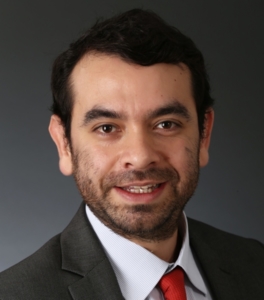We use Cookies. Read our Terms
- News
- Investing for tomorrow
Investing for tomorrow
Felipe Gordillo, Senior ESG Analyst at BNP Paribas Asset Management, provides an investor’s perspective of ESG and developing countries…
As published in the October 2020 issue of the OPEC Fund Quarterly.

OPEC Fund Quarterly: What are the main ESG-related challenges and opportunities of investing in low-income countries?
Felipe Gordillo: Investors need to be aware that the relevance of ESG factors differs between emerging and developed markets. For example, access to electricity is a key driver of economic development within emerging markets (EmMs), whereas it is of less use in assessing ESG within developed markets (DMs). EmMs countries are more exposed to external environmental and social shocks, and the extent of their resilience will be determined by the strength of their own financial systems and institutions. EmMs countries are exposed to physical risks and extreme weather events as a result of global climate change. At the same time, in some cases GDP is highly dependent on fossil fuels exports. Today, the great opportunity for investors is to support EmMs countries who are ready to embrace the transition to a low carbon economy. Investments in key infrastructure supporting low carbon solutions will be future drivers of growth. OFQ: How can the development community better address ESG and communicate about it – where should the focus be?
FG: Today, the key emerging trend within the institutional investor community is to generalize ESG integration across all asset classes. This includes ESG data, investors’ own credit analysis and internal due diligence processes.Following this rationale, engagement and dialogue with EmMs issuers will become the dominant trend in EmMs investing. Investors are showing an increased appetite for conversations with governments about their commitments on the Sustainable Development Goals (SDGs) and the Paris Agreement, as well as to thoroughly assess governance and institutional strengths. The development community and EmMs issuers need to strengthen their capabilities in order that debt management offices are better able to respond to investors’ increasing requests to engage on sustainability issues.
OFQ: How does rating the ESG credentials of a country differ from rating those of a commercial entity?
FG: There are common ESG factors for corporates and sovereign issuers. What differs are the data points that are used to measure progress. For example, climate change mitigation and reaching long term carbon neutrality are both relevant for countries and corporates. For sovereigns, the Paris Agreement carbon pledges or Nationally Determined Contributions are the key starting point to assess countries’ commitment to long term carbon neutrality. In addition, an important key difference is the time horizon for the availability of ESG data for sovereigns compared to corporates. Within the sovereign debt market, ESG signals are not necessarily priced as quickly as we would like to see. Currently the market is not correctly pricing future climate risks. This may change in thefuture as catastrophic climate events become more evident and regular, and more financially material as they add to the pressure on fiscal policy.
OFQ: How does an event such as the current pandemic affect ESG-ratings and capabilities? Will we see ESG gains being lost as countries / companies shift their focus?
FG: The first effect is to support the need for investors to value and integrate ESG assessments into sovereign debt. The COVID-19 crisis has highlighted the importance of a country’s health infrastructure to its economic resilience. One example of this, number of hospital beds per 10,000 inhabitants – a classic ESG KPI – is key information that helps governments to cope with the increasing number of severe COVID-19 cases that require hospitalization. A low number of hospital beds means that a country’s health system is more vulnerable and puts additional pressure on governments to use lockdowns as the only credible solution to stop the spread of the virus and cope with the crisis. This solution is not optimal as evidence shows GDP contracting. The second effect is to see how financial markets can contribute to providing solutions to the current crisis. In particular, the current dynamism of social bond issuance has facilitated resources for those issuers willing to respond to the crisis.
Colombian national Felipe Gordillo has worked within sustainability investment research at BNP Paribas Asset Management (BNPP AM) since 2009, and additionally co-chairs the Institutional Investor Group on Climate Change (IIGCC) Property Working Group, as well as being an Adjunct Professor of Microfinance and Responsible Investment at Université Panthéon-Sorbonne.
More ESG articles featured in the Oct 2020 OPEC Fund Quarterly
Gail Hurley calls for more patient capital and a hands-on approach…
ESG and the SDGs: A perfect partnership?
An edited transcript of answers to interview questions from Dr Alexis Crow, PwC's lead of geopolitical investing
ESG: In the eye of the beholder
Juan E Notaro Fraga, Executive President of FONPLATA Development Bank, shares his views on ESG credentials...